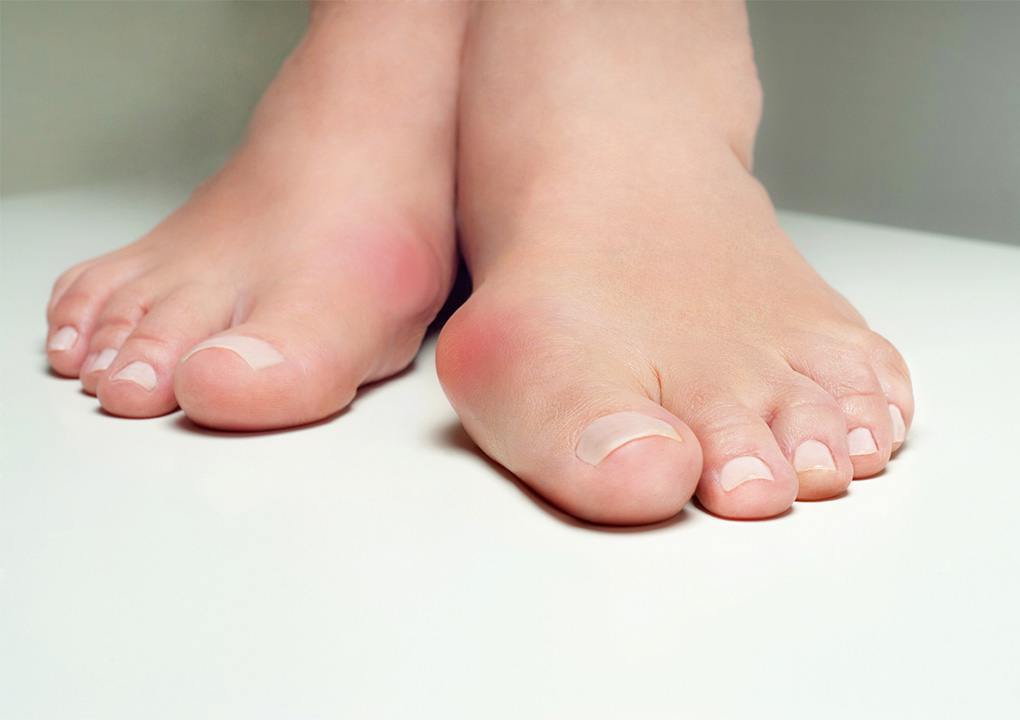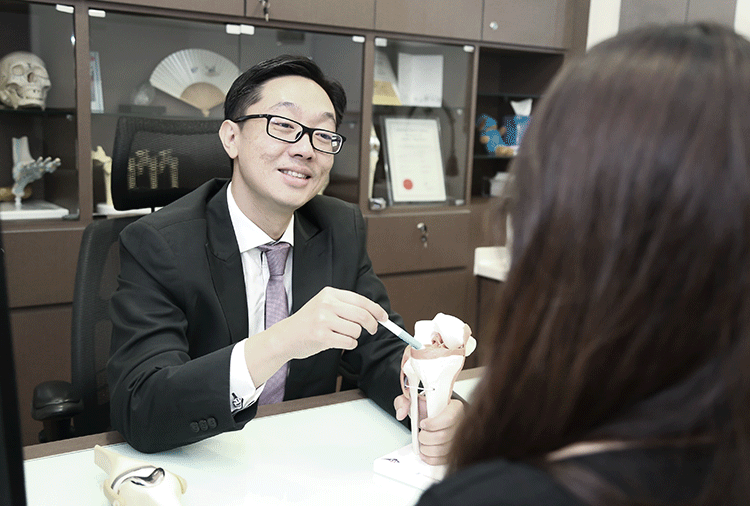What Is Bunion, and Why Is Treatment Important?
What Are the Causes and Risk Factors of Bunion?
Several factors can contribute to the development of bunions, including:
Genetics – Bunions can run in families, suggesting a genetic predisposition to the condition.
Improper Footwear – Wearing tight, narrow, or high-heeled shoes can increase pressure on the toes and contribute to the development of bunions.
Biomechanical Issues – Abnormalities in foot structure or mechanics, such as flat feet, high arches, or abnormal gait patterns, can increase the risk of developing bunions.
Foot Injuries – Previous foot injuries or trauma, such as fractures or sprains, can alter foot mechanics and contribute to the development of bunions.
Medical Conditions – Certain medical conditions, such as arthritis or inflammatory joint diseases, can increase the risk of developing bunions.
Occupational Factors – Jobs or activities that involve prolonged standing, walking, or repetitive stress on the feet can increase the risk of developing bunions.
What Are the Common Symptoms of Bunion?
The symptoms of a bunion may vary in severity but commonly include:
Bony Bump – A visible bump or protrusion at the base of the big toe, on the inside of the foot.
Toe Deviation – The big toe may angle outward towards the other toes, causing it to overlap or crowd the adjacent toes.
Pain or Discomfort – Pain or tenderness at the site of the bunion, particularly when wearing shoes or engaging in activities that involve pressure on the affected area.
Swelling – Swelling, redness, or inflammation around the bunion, indicating irritation or inflammation of the soft tissues.
Difficulty Wearing Shoes – Bunions can make it difficult to find comfortable shoes that accommodate the deformity, leading to rubbing, friction, and discomfort.
Corns or Calluses – Corns or calluses may develop on the skin overlying the bunion, due to friction or pressure from shoes rubbing against the bony prominence.
How Is Bunion Diagnosed?
Medical History – Your doctor will ask about your symptoms, including any pain, discomfort, or changes in the appearance of your foot. They may inquire about factors that could contribute to the development of bunions, such as wearing ill-fitting shoes, genetic predisposition, or underlying medical conditions.
Physical Examination – During the physical examination, your doctor will:
- Inspect the affected foot for signs of a bunion, such as a bony bump at the base of the big toe joint.
- Assess the alignment of your toes and the degree of deformity.
Evaluate the range of motion of the big toe joint and any associated stiffness or limitation in movement. - Check for signs of inflammation, redness, or tenderness around the bunion area.
Assess your gait and weight-bearing distribution to determine the impact of the bunion on your foot mechanics.
Foot X-rays – In some cases, your doctor may order X-rays of your foot to confirm the diagnosis of a bunion and assess the severity of the deformity. X-rays can provide detailed images of the bones and joints in your foot, allowing your doctor to evaluate the degree of misalignment, assess for joint damage, and determine the appropriate course of treatment.
What Are The Bunion Treatment Options?
Footwear Modifications
Padding or Orthotic Inserts
Toe Spacers or Splints
Medications
Foot Exercises and Stretching
Orthotic Devices
Toe Separators or Corrective Splints
Surgical Intervention
- Bunionectomy – In cases where conservative measures fail to provide relief or if the bunion is causing significant pain, deformity, or difficulty with walking, bunionectomy surgery may be recommended. During a bunionectomy, the surgeon removes the bony prominence of the bunion and realigns the bones of the foot to correct the deformity. The surgery may also involve tightening or repositioning soft tissues around the joint. There are several types of bunionectomy procedures, including:
- Osteotomy – Cutting and realigning the bones of the foot to correct the bunion deformity.
Exostectomy – Removing the bony prominence (bump) of the bunion without realigning the bones. - Arthrodesis (Fusion) – Fusing the bones of the big toe joint to stabilise the joint and correct the bunion deformity.
Recovery And Prevention Strategies For Bunion
For Recovery:
- Wear comfortable, well-fitted shoes with a wide toe box that allows enough room for the toes to move freely. Avoid high heels or shoes with narrow, pointed toes, as they can exacerbate bunion symptoms.
- Use bunion pads or cushions to reduce pressure and friction on the bunion. Custom orthotic inserts can help redistribute pressure and support the foot’s natural arch, relieving pain and discomfort.
- Apply ice packs to the bunion for 15-20 minutes daily to reduce pain and inflammation. Wrap the ice pack in a cloth to protect the skin.
- Over-the-counter pain relievers, such as acetaminophen or nonsteroidal anti-inflammatory drugs (NSAIDs), can help alleviate pain and reduce inflammation associated with bunions. Consult with a healthcare professional for appropriate medication and dosage recommendations.
- Perform gentle toe exercises and stretches to improve flexibility and strengthen the muscles around the big toe joint. This can help reduce stiffness and improve mobility.
- Resting the foot and elevating it above the heart level can help reduce swelling and relieve pressure on the bunion. Prop up the foot with pillows when lying down or sitting.
- In severe cases where conservative treatments fail to provide relief, surgical intervention may be necessary to correct the deformity and alleviate symptoms. Bunion surgery typically involves realigning the bones of the big toe joint and may include removing excess bone or tissue.
For Recovery:
- Choose shoes that are comfortable, supportive, and properly fitted. Opt for shoes with a wide toe box and low heels to reduce pressure on the toes and minimise the risk of developing bunions.
- Consider wearing custom orthotic inserts, or arch supports to provide additional support and stability to the feet and help prevent the progression of bunions.
- Maintain a healthy weight to reduce the load on the feet and lower extremities, which can help prevent the development or worsening of bunions.
- Limit the use of high-heeled shoes, as they can increase pressure on the toes and contribute to the development of bunions. Opt for shoes with a lower heel height and a more supportive design.
- Incorporate toe exercises and stretches into your daily routine to improve flexibility, strengthen the feet’ muscles, and maintain proper toe alignment.
- Practice good foot hygiene and inspect your feet regularly for any signs of deformities or abnormalities. Seek prompt medical attention if you notice any changes or develop foot pain or discomfort.
- Pay attention to any signs of discomfort or pain in the feet and toes, and avoid activities or footwear that exacerbate symptoms. If you experience persistent foot pain or notice changes in foot structure, consult a healthcare professional for evaluation and treatment.






